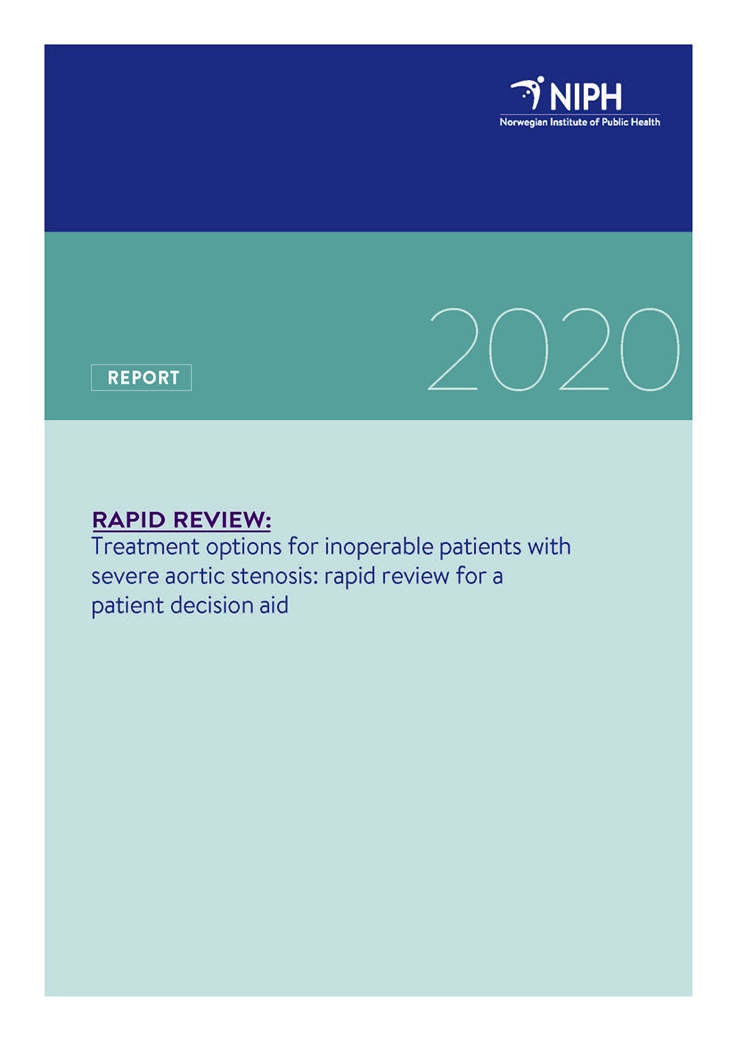Treatment options for inoperable patients with severe aortic stenosis: rapid review for a patient decision aid
Note
|Published
We were commissioned to summarize the evidence for inoperable patients with severe aortic stenosis, i.e. patients who are ineligible for surgical aortic valve replacement.
Key message
Patients who suffer from severe aortic stenosis may require replacement of the aortic valve, either by open-heart surgery or transcatheter aortic valve implantation (TAVI). Conservative treatment, such as medical therapy or active surveillance of the patient, are therapeutic alternatives.
We were commissioned to summarize the evidence for inoperable patients with severe aortic stenosis, i.e. patients who are ineligible for surgical aortic valve replacement.
We found evidence that TAVI compared with medical therapy:
- Probably reduces all cause mortality at one and five years follow-up
- Probably improves quality of life
- Probably reduces moderate to severe cardiac symptoms up to three years follow-up
- Probably reduces hospital admissions five years follow-up
- Probably makes little or no difference in deaths at 30 days follow-up
- Probably makes little or no difference in major bleeding events at three years follow-up
- Probably makes little or no difference for the risk of myocardial infarction at three years follow-up
- Probably makes little or no difference for the need of a permanent pacemaker at three years follow-up
- Probably increases the risk of stroke at one year
We did not find any evidence comparing TAVI with active surveillance, or active surveillance compared with conservative treatment


